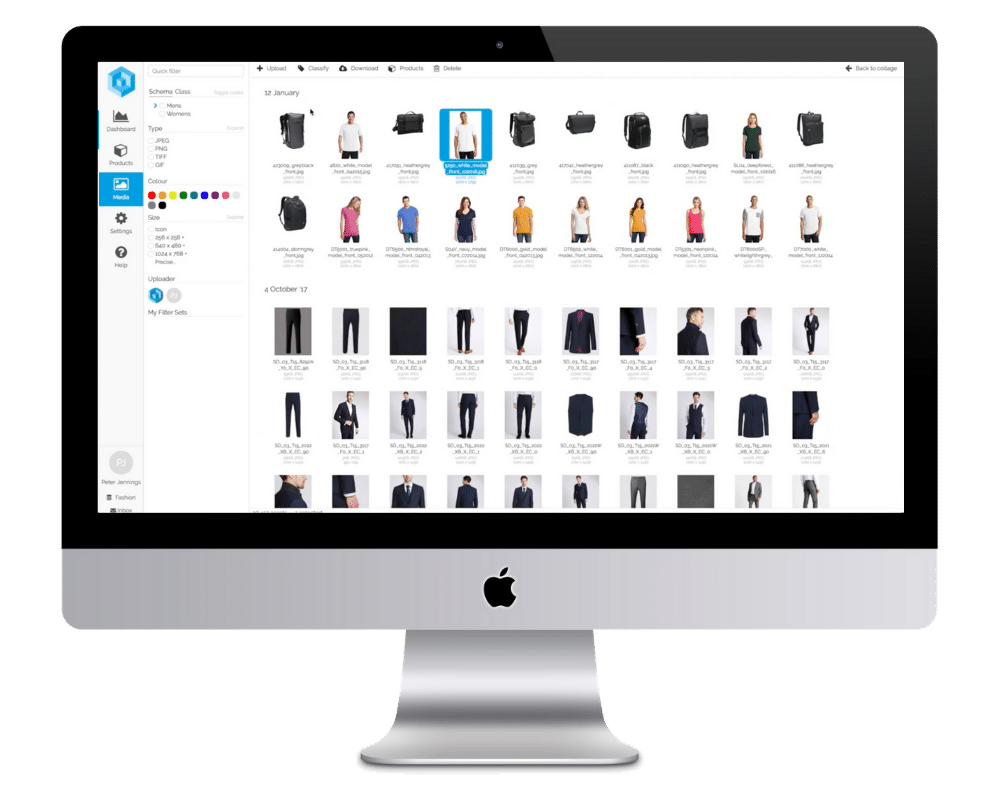Key Takeaways:
- Digital Product Passports (DPPs) are set to become mandatory in the EU and require detailed product data.
- A modern PIM system is essential for sourcing, enriching, and distributing data needed for DPP compliance.
- Pimberly’s AI-powered PIM helps manage component level data, enabling the creation of digital twins and ensuring real-time updates.
What Is the Digital Product Passport?
Definition
The Digital Product Passport (DPP) is an EU regulatory initiative requiring standardized, shareable digital records for products. Each passport includes data on materials, origin, sustainability, certifications, repairability, and disposal. Accessible via QR codes or NFC tags, DPPs create a “digital twin” of the physical product. This digital twin evolves alongside the physical product, ensuring up-to-date information is always available to all stakeholders—from regulators to consumers.
DPPs are a key pillar of the European Green Deal and the Circular Economy Action Plan, with the goal of extending product lifecycles, improving resource efficiency, and empowering consumers with transparent data. The legislation will apply to a broad range of industries including textiles, electronics, batteries, furniture, and construction materials, with phased implementation beginning in 2025.

Use Cases
- Compliance Verification: Automates proof of adherence to sustainability and safety standards, reducing the risk of non-compliance fines.
- Supply Chain Transparency: Tracks components and materials to their source, helping companies identify and mitigate supply chain risks.
- Circular Economy Support: Enables services like repairs, part replacements, resale, and recycling, which support sustainable product lifecycles.
- Consumer Empowerment: Provides transparency and combats greenwashing by giving end users the data to make informed decisions.
- International Trade: Harmonized digital labeling simplifies compliance across borders, reducing friction in global commerce.
Why It Matters for Retailers and Manufacturers
Challenge: Managing Complex Data Requirements
DPPs demand highly granular data sourced from across the supply chain. Without centralization, brands face data silos, inconsistencies, and compliance risks. The need to update product data in response to regulatory, supplier, or material changes adds additional complexity. Manual processes make this level of tracking nearly impossible, particularly for companies managing hundreds or thousands of SKUs.

Additionally, different markets may enforce slightly different thresholds or documentation requirements. Keeping track of variant requirements and updating product documentation accordingly can consume significant resources without a scalable solution.
Solution: Centralize Data with PIM
A Product Information Management (PIM) system consolidates product data into a single source of truth. It enables:
- Enrichment of product attributes (e.g., carbon footprint, material origin, recyclability)
- Validation workflows to ensure data completeness and accuracy
- Centralized governance and role-based access control for contributors and reviewers
- Seamless syndication to platforms generating DPPs or regulatory compliance portals
By adopting a modern PIM system, organizations can build structured templates for passport attributes, map supplier provided data into the correct fields, and automate the population of digital product passports for all SKUs.
For more on preparation steps, see our guide on preparing for DPP regulations.
Increased Flexibility for Consumers
Key Feature: Real-Time Data and Digital Twins
One of the key features that a modern PIM system brings to the table is the ability to maintain real-time, detailed digital twins of your products. In the context of digital product passports, a “digital twin” means an up to date digital replica of all the data about a product. PIM solutions like Pimberly excel at this by continuously aggregating every attribute and update about a product into a single record. Did a component in your product change due to a supply issue?

Update it in the PIM once, and that change can be reflected in the product’s passport everywhere. The same goes for new sustainability information (say your supplier provided an updated carbon footprint for a material). The PIM makes it easy to update that info across all channels, including the DPP.
Flexibility & Transparency
This real-time data capability provides flexibility and transparency for consumers. With up-to-date digital product passports, consumers can trust that the information they access (by scanning a QR code on a package, for example) is current and accurate. If a safety recall happens or a product’s composition changes, the passport can be updated immediately without reprinting labels, thanks to digital data. In fact, DPPs allow instant digital updates to product information without the costly process of altering physical packaging – a huge benefit considering 30–35% of consumer goods packaging is updated every year. This not only saves cost, but also ensures consumers and regulators always see the latest product info.
Additionally, having a rich digital twin of product data enables personalized and accessible information for consumers. For example, because all product details are stored digitally, it becomes easier to offer automatic translations of the product passport in a consumer’s preferred language, or even provide text-to-speech descriptions for accessibility. In short, the PIM guarantees that each digital product passport is a living document, evolving with the product and delivering value-added information to consumers at every stage.
Use Case Example
A sustainable fashion brand uses Pimberly PIM to track:
- Organic cotton sourcing
- Dye safety certifications
- Packaging materials and recyclability
- Recommended care and repair instructions
Consumers scan a QR code on the garment label and access a detailed DPP that includes traceability to farms, compliance with REACH and OEKO-TEX standards, and guidelines for end-of-life recycling. Updates—such as a new eco-friendly lining—are reflected immediately.

This use case shows how DPPs not only support compliance, but also enhance the customer experience. Consumers gain access to rich, personalized content about their purchase, and the brand builds trust by providing evidence-backed sustainability claims.
Digital Product Passports and PIM: Why Product Information Matters
Digital product passports rely on clean, complete, and consistent product data. Without a centralized system like PIM, businesses will struggle to source, manage, and maintain the high volume of structured data required.
PIM systems are foundational to this effort, enabling:
- Centralized management of product data across teams, geographies, and departments
- Clean data import from suppliers, ERPs, or third-party platforms
- Export-ready syndication to DPP platforms, marketplaces, and government databases
- Integration via APIs and open data standards
With AI-powered compliance tools from Pimberly, businesses:
- Monitor component-level data gaps automatically
- Stay current on changing sustainability regulations
- Flag anomalies and trigger alerts for non-compliant entries
- Generate digital twin records for each product automatically
The result is not only better compliance and risk mitigation, but also increased agility and faster time-to-market for sustainable products.
Learn more about how PIM works.
FAQs
Q: When do DPPs become mandatory? A: Starting in 2025, the EU will roll out DPP requirements by product category, beginning with textiles, electronics, and batteries. Additional sectors such as furniture and construction materials are expected to follow between 2026 and 2030.
Q: What information is required in a DPP? A: A digital product passport typically includes:
- Unique product ID and serial numbers
- Manufacturer and origin details
- Material and component composition
- Environmental impact data (e.g., carbon footprint, recyclability)
- Certifications and regulatory documentation
- Repairability scores and spare part availability
- End-of-life instructions (e.g., take back schemes or recycling)
Q: Do non-EU companies need to comply? A: Yes. Any company that exports physical goods into the EU must comply with DPP regulations. This includes manufacturers, private-label brands, and third-party sellers. Non-compliance can lead to product delisting, customs blocks, or fines.
Q: How does Pimberly help with DPP compliance? A: Pimberly enables businesses to:
- Map all necessary DPP fields as product attributes
- Automate attribute population and validation
- Enrich incomplete data using AI and integrations
- Publish DPP-ready records to external systems via open APIs
How to Stay Ahead with PIM
Digital product passports are a regulatory turning point. For forward-thinking businesses, they’re also a chance to build trust, reduce waste, and differentiate through transparency.
Retailers, manufacturers, and distributors should begin by auditing their existing product data landscape. Key questions to ask include:
- Is your data centralized, structured, and searchable?
- Do you have visibility into component and material-level details?
- Are you able to onboard data from multiple suppliers consistently?
- Can you distribute product updates to multiple channels, including DPP systems?
By investing in a robust PIM solution like Pimberly, you:
- Centralize and validate all required data
- Enable seamless updates and global distribution
- Leverage AI to automate compliance at scale
- Future-proof your business against changing legislation
Get ahead of the curve. Explore how Pimberly can help your business turn DPP compliance into a competitive advantage and unlock new opportunities in the circular economy.

















